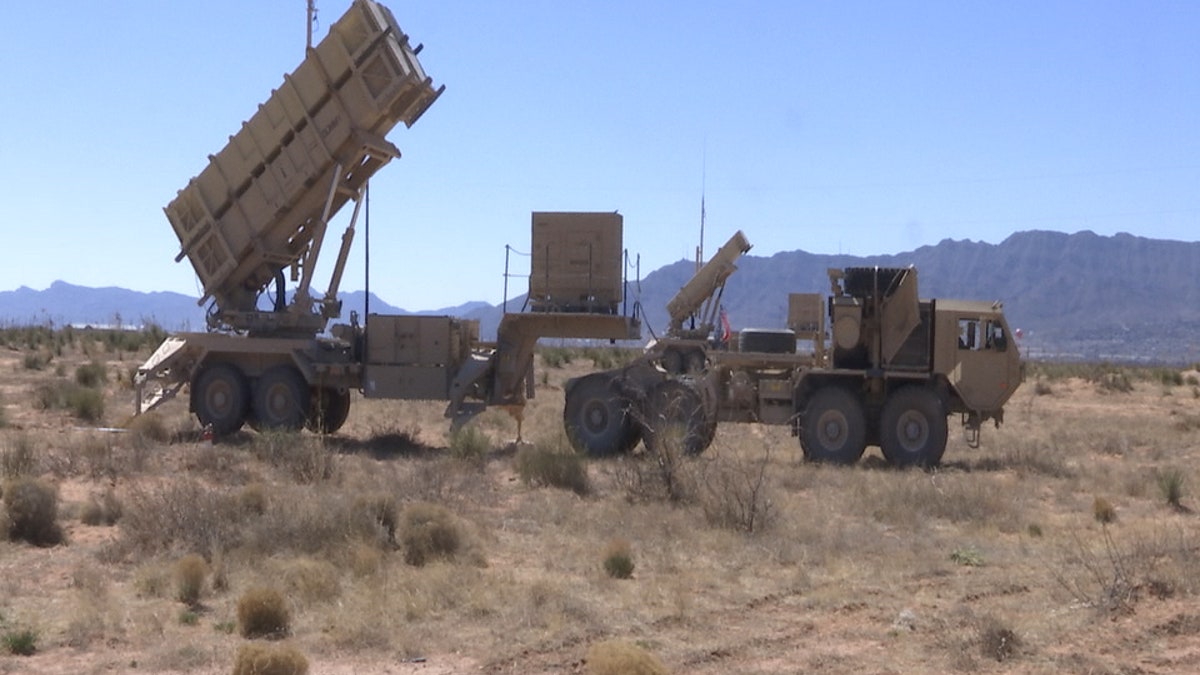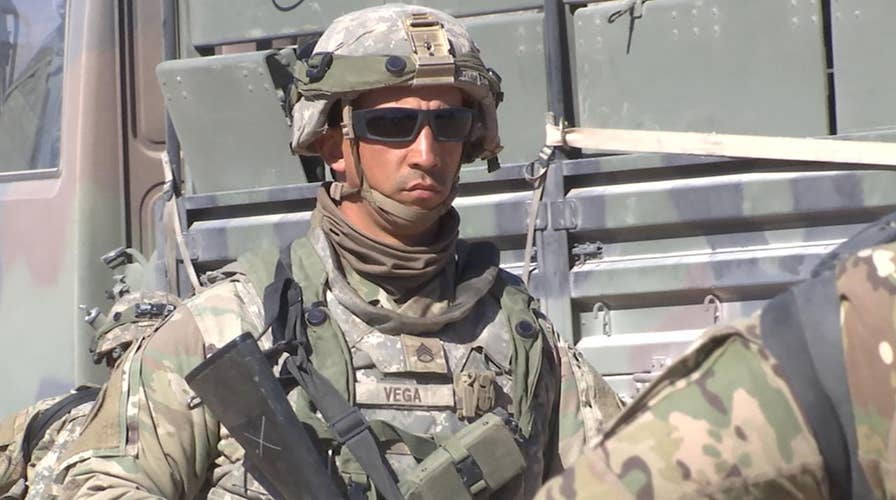Military trains in New Mexico for desert combat missions
Service members from the Army, Air Force and Marines participate in ‘Roving Sands’ drill to prepare for possible future missions in climates like the Middle East.
More than 2,000 U.S. service members from the Army, Air Force and Marines are in the southern New Mexico desert for a two-week training mission designed to put their skill and stamina to the test.
The exercise, called Roving Sands, simulates air threats to fellow soldiers and U.S. allies that Army air defense troops must defend.
“We’ve been working really hard out here. If we keep this up we’ll have no problems anywhere we deploy,” said Cpl. Joseph Stout, who works system maintenance for the 343 Air Defense Unit’s Bravo Battery.
When Fox News met with Bravo Battery at White Sands Missile Range, they had been working 24 hours a day for 10 days. The night before, they received orders to move to a new location. They took everything down, moved overnight, and set their entire Patriot Missile system back up on an empty patch of desert the next morning.
“It seems like a lot longer than that, I can’t tell a lie,” said Spc.Jonathan Garrison. “I really want to sleep on my own mattress. That’s going to change me entirely once I get to do that.”
The soldiers were exhausted and covered in sand. But many were optimistic about how fast they had set up the Patriot missiles and the supporting equipment when they arrived at their new location.
“That’s what everyone sees, like our teamwork. Our cohesion is what makes us special and different,” said Stout.
For the third time during the exercise, Bravo Battery had to set up their Patriot Missile system in one hour and all the supporting equipment in four hours, including maintenance, sleeping quarters, food, water and fuel.
They also set up defenses around their base, which include barbed-wire fences and nine 50-caliber M-2’s mounted on Humvees. Fellow U.S. soldiers playing the enemy could attack them at any time.

Soldiers place barbed wire around their missile site to prevent easy entrance from enemy forces. (Fox News)
“Seeing people come together and work under stress and get things done, it’s impressive really,” said Garrison. “Everybody just seems to keep running and keep getting it done.”
Roving Sands began in 1989 at Fort Bliss, Texas where it served the same purpose it does today – make the training feel as real as possible. The exercises’ second run in 1990 became training for the 11th Brigade’s deployment to the Middle East for Operations Desert Shield and Desert Storm. It grew into the largest yearly air defense exercise in the world with multiple countries taking part, including Great Britain, The Netherlands, Canada, and Japan.
This is the first year since 2005 the 32nd Army, Air and Missile Defense Command has hosted the event. The exercise is testing air defense forces that run some of America’s most important weapons, including Patriot, THAAD, and Avenger systems.

One of seven Patriot Missile launchers set up by the Army's 343 Air Defense Unit’s Bravo Battery (Fox News)
“You get developed by peers, and superiors and subordinates alike, so it’s really a team effort that highlights the spirit of the air defense branch,” said Capt. Cody Davis, Bravo Battery’s commander.
Bravo Battery will receive a report on its performance once it’s over. A group of soldiers called observer/coach/trainers watch how the soldiers carry out their orders and problem solve.
“If we can help make them better, and then in turn as these events and exercises continue as the years go, they have a chance to evaluate my unit and make my unit better, then that’s mission success,” said Capt. Xander Alix, an observer/coach/trainer.
But despite the exhaustion, stress, and knowledge that they’re constantly being monitored, the soldiers said Roving Sands was well worth the experience.
“It’s a good feeling," Stout said. 'I personally can say that working out here and doing this field exercise, it shows some of us what our job is, how it would work. It’s a good learning experience.”






















